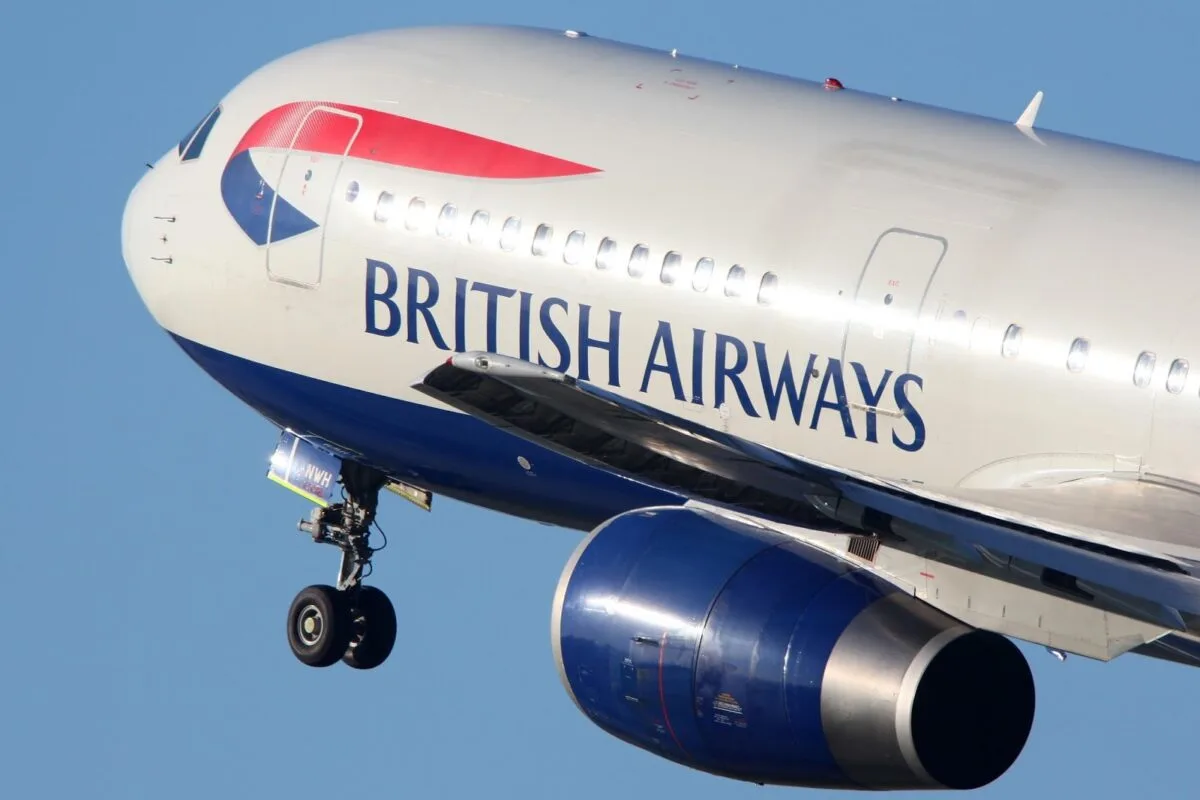You’ve probably heard the tragic story of Patsy Cline’s untimely death in a plane crash. It’s a tale that’s been retold countless times, yet the question still lingers: why did Patsy Cline’s plane crash?
The crash, which occurred on March 5, 1963, claimed the lives of Cline and her fellow passengers. It’s a heartbreaking end to a star that was just beginning to shine brightly in the country music world. This article aims to delve into the details surrounding the crash, shedding light on the factors that led to this catastrophic event.
With a careful examination of the circumstances, the weather conditions, and the decisions made that fateful day, you’ll gain a deeper understanding of why Patsy Cline’s plane crashed. Stay tuned as we unravel the mystery behind one of country music’s most tragic events.
Patsy Cline’s Ill-Fated Flight

Just as Patsy Cline sang about heartbreak, her last day was fraught with it. Her death on March 5, 1963, shocked the country music world. Here’s a delve into the fateful journey that marked the end of her meteoric rise to fame.
Flight Details
That day, Patsy Cline’s plane, a Piper PA-24 Comanche, embarked from Kansas City, Missouri, aiming for Nashville, Tennessee. Accompanying her were country music artists Hawkshaw Hawkins and Cowboy Copas. Pilot Randy Hughes, Cline’s manager and Copas’s son-in-law, also met his demise on the disastrous flight.
Inclement Weather and Warnings
Relevant to the plane crash, you’ll want to note the weather conditions. The National Weather Service reported severe weather warnings, including turbulence and poor visibility due to fog and rain. Despite such warnings, Hughes decided to continue with the flight.
The Final Hours
The plane refueled at Dyersburg Municipal Airport in Dyersburg, Tennessee, and was offered overnight accommodation due to the weather conditions. However, they reject the offer and choose to push through the remaining 90 miles to its destination. That decision was tragically the last; the plane never arrived in Nashville.
Weather Conditions on March 5, 1963

The afternoon of March 5, 1963, dawned as a weather trap. The Federal Aviation Administration had been warning of severe weather conditions across Missouri and Tennessee.
From turbulence and limited visibility to intense rain, the conditions were far from ideal for a small aircraft like Cline and her entourage’s Piper Comanche.
As the plane continued its flight from Kansas City, the weather conditions deteriorated. A thick fog made visibility poor, greatly exacerbating the risk of the journey. Meteorological reports from that day indicated a high likelihood of sudden turbulence, a treacherous, invisible threat for any aircraft.
In Dyersburg, Tennessee, where the plane refueled, the conditions were no better. Rain intensified, accompanied by thickening fog and lowering clouds; visibility was at an all-time low.
Despite these clear indicators and the strong recommendation from Dyersburg’s airfield manager, the journey continued towards Nashville.
The severe weather conditions played a major role in the tragic fate of Patsy Cline and her companions. Through this account of the weather that day, one gets an idea of what the pilot, Randy Hughes, was up against.
Flying through fog and rain is hard enough for seasoned pilots. Facing these elements at night, in an aircraft not equipped with the modern technology we have today, significantly amplified the difficulty.
To better understand the gravity of the situation, breaking down the challenging conditions into their individual components certainly helps. Let’s delve into how exactly these factors could have impacted the plane’s flight.
The Aircraft: A Closer Look

Stepping into the heart of the story, let’s not overlook the aircraft itself: a Piper PA-24 Comanche.
This low-wing monocoque structure aircraft may have been adequate for a smooth weather ride, but it’s noteworthy to consider that this aircraft type wasn’t ideally suited for the challenging weather on that fateful day of March 5, 1963.
Let’s burst some myths here. The Piper PA-24, while popular in the 1960s, was categorized as a ‘general aviation’ aircraft; it wasn’t commercial grade.
So, despite its popularity and affordability in the sphere of leisure flying, it didn’t house the technological faculties we associate with modern-day aircraft that are better equipped to handle severe weather conditions.
In essence, the PA-24 was more of a fair-weather friend. It possessed a single engine, which for pilot Randy Hughes, added an extra layer of difficulty while maneuvering in the storm. This wasn’t a factor of poor aircraft choice but rather a limitation of its design and class.
The absence of modern navigation or weather radar technology in the PA-24 made the flight from Dyersburg to Nashville akin to flying blind in deteriorating weather.
The plane’s instrumentation would have been basic by today’s standards, featuring turn coordinators, airspeed indicators, and an altitude indicator, but lacking vital storm detection and navigation mechanisms.
In conditions like these, where visibility was reduced to near zero, instruments such as an on-board weather radar or even a GPS would have been invaluable. Yet, for this unfortunate journey, the limited capabilities of the Piper PA-24, designed for VFR (Visual Flight Rules) flying, fell drastically short in the face of increasing danger.
Hence, as the weather intensified so did the vulnerability of the aircraft, escalating the risk factor in the concluding moments of the flight.
We now see a deeper glimpse into one of the contributing causes behind Patsy Cline’s plane crash. As you digest this information, we’ll segue into our further exploration of other details surrounding this historical event.

Impact of Pilot’s Decision-Making

It’s important to acknowledge the role of human factors in the crash, particularly the decisions made by the pilot, Randy Hughes. As the conditions on that fateful March day took a turn for the worst, Hughes was confronted with some difficult choices.
Historical aviation records suggest that Hughes, who was also the plane’s owner, had logged around 700 flight hours. While he was a commercial pilot, he didn’t hold an instrument rating.
This meant that he wasn’t legally authorized or trained to navigate an aircraft under Instrument Flight Rules (IFR), which would’ve been a necessity in the severe weather conditions of March 5, 1963.
While Hughes had elected to fly under Visual Flight Rules (VFR), the encroaching storm clouded his ability to discern visual landmarks, a skill key to VFR navigation.
Consequently, Hughes found himself navigating an unfamiliar path in treacherous weather, essentially flying blind.
Despite his relative inexperience and these challenging conditions, Hughes made the decision to continue the flight. This determination, although showing courage, likely played a substantial part in the tragic outcome.
An experienced, instrument-rated pilot might have decided to divert the flight or land until conditions improved.
As you dig deeper into this scenario, it’s clear that the ability to make sound and timely decisions is of paramount importance in aviation. Hughes was not negligent, simply unprepared for the circumstances he was presented with.
His decisions, coupled with the limitations of the Piper PA-24 Comanche, were significant factors in the fate of Patsy Cline’s flight.
Disclaimer: The objective of this article is not to assign blame or responsibility for the tragic events that unfolded, but rather to educate and provide insights on aviation safety.
Lessons Learned from the Tragedy
Crises often carry deep lessons and the tragic crash of Patsy Cline’s plane is no different. By pointing out the pitfalls and bad decisions made during the flight, we aim for a better understanding of aviation safety that could save lives in the future.
The primary lesson lies in understanding the critical importance of instrument rating for pilots. Randy Hughes, despite being a commercial pilot, didn’t possess an instrument rating.
This certification is essential for navigating under the Instrument Flight Rules (IFR), especially during severe weather conditions.
Hoping to navigate on the basis of Visual Flight Rules (VFR) in deteriorating weather, Hughes struggled. In an unstable weather condition, VFR can become essentially impracticable and unsafe, demanding the need for IFR navigation skills.
Another takeaway is the aircraft’s maintenance and readiness. Patsy Cline’s flight was in a Piper PA-24 Comanche. The plane’s deficiencies played a big role in this tragedy. It’s a stark reminder that pre-flight checks and routine maintenance can’t be overlooked.
It’s not simply about whether a plane can fly; it’s about whether it can handle unexpected events and emergencies that might occur during the flight.
Finally, it’s important to recall and understand the significant influence of pressure and decision-making in aviation. Pressured by the need to reach the destination, Hughes made a risky decision to continue the flight, leading to a fatal outcome.
Every flight involves crucial decisions that affect safety. Pilots should stay committed to prioritizing safety over schedule or destination pressures.
The goal remains the same: to prioritize aviation safety. It’s through understanding mishaps like the Patsy Cline flight tragedy that we can prevent similar future incidents, making the skies safer for everyone.
| Factor | Description |
|---|---|
| Weather Conditions | Poor weather conditions, including fog and rain, contributed to reduced visibility and challenging flying conditions. |
| Pilot Error | The pilot’s decision to fly into adverse weather conditions and his lack of instrument flying experience played a significant role in the crash. |
| Aircraft Maintenance | Maintenance issues with the aircraft, including concerns about its fuel system and instrumentation, may have contributed to the accident. |
| Aviation Regulations and Oversight | Lack of strict adherence to aviation regulations and oversight may have contributed to inadequate pilot training and maintenance standards. |
| Lessons Learned | Patsy Cline’s plane crash underscores the importance of thorough pre-flight planning, adherence to weather minimums, and pilot proficiency in instrument flying. It also highlights the critical role of ongoing aircraft maintenance and regulatory compliance in ensuring flight safety. |
FAQs
1. What is the main focus of this article?
The article focuses on the importance of pilot instrument-rating, aircraft maintenance, and decision-making in aviation safety, learned from the tragic crash of Patsy Cline’s plane.
2. Why is pilot instrument-rating crucial in aviation safety?
Pilot instrument-rating is essential for navigating under Instrument Flight Rules in severe weather. The article emphasizes this using Randy Hughes’ example, who lacked this certification and crashed.
3. How does aircraft maintenance contribute to aviation safety?
Aircraft maintenance is vital in ensuring every component functions correctly. This article refers to the faulty Piper PA-24 Comanche in Patsy Cline’s crash to underline the importance of pre-flight checks.
4. How does decision-making affect flight safety?
Poor decision-making, influenced by pressures to reach the destination, can lead to risky choices and potentially disastrous outcomes, such as in Hughes’ case.
5. What is the ultimate goal of this article?
The article aims to enhance aviation safety by learning from past accidents like the Patsy Cline flight tragedy.
Conclusion
- You’ve journeyed through the tragic tale of Patsy Cline’s plane crash, uncovering the crucial need for pilot instrument rating, meticulous aircraft maintenance, and sound decision-making in aviation safety.
- You’ve seen how Randy Hughes’ lack of an instrument rating, despite being a commercial pilot, played a part in the tragedy.
- You’ve also learned how the Piper PA-24 Comanche’s maintenance shortcomings served as a stark reminder of the importance of pre-flight checks.
- Moreover, you’ve discovered how pressure and decision-making can influence outcomes, with Hughes’ fateful decision to continue the flight under duress contributing to the fatal outcome.
- The aim isn’t just to recount a tragedy, but to enhance aviation safety by learning from past incidents.
- Let’s remember the Patsy Cline flight tragedy not just as a sad story, but as a push towards safer skies.
